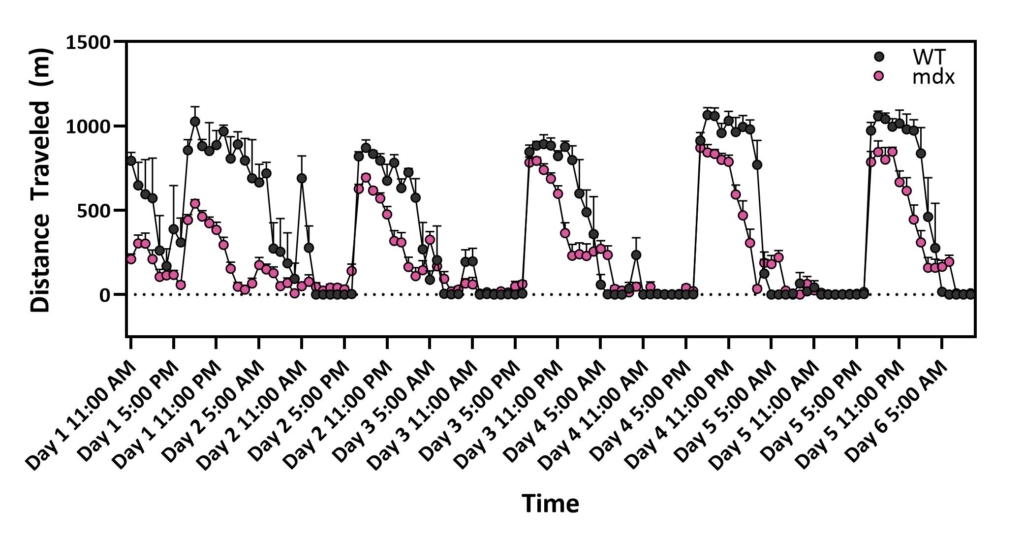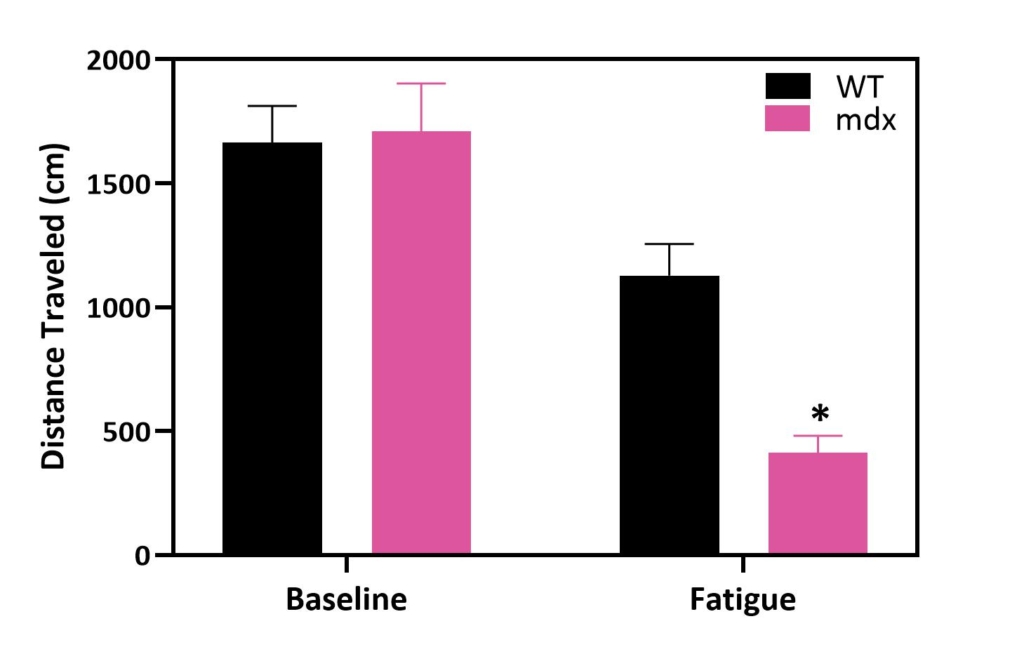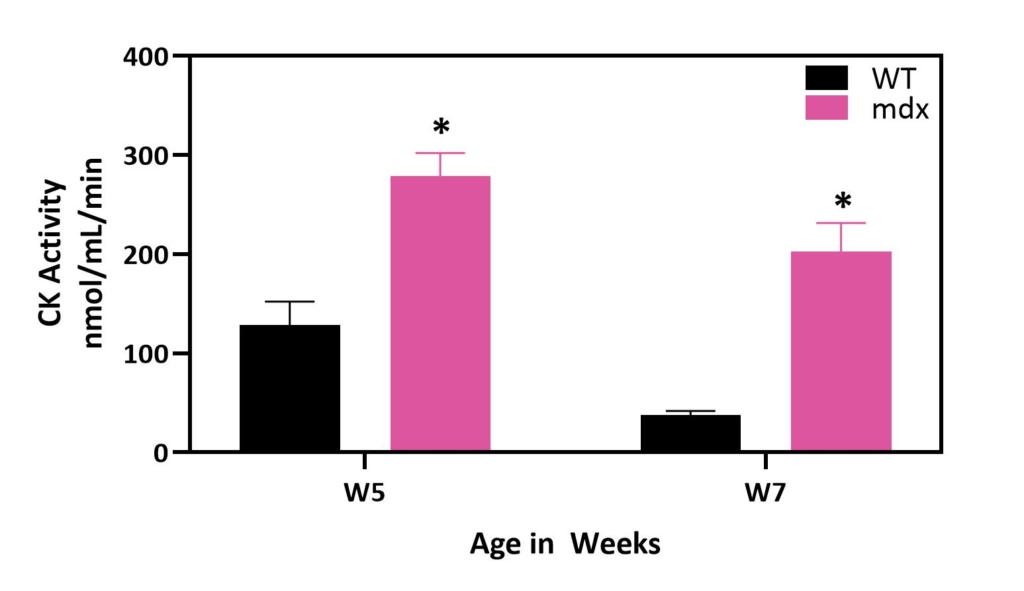Duchenne muscular dystrophy (DMD) is an X-linked genetic disorder characterized by progressive muscle degeneration caused by the absence of dystrophin, a protein connecting the muscle fiber cytoskeleton to the extracellular matrix through the cell membrane. Symptoms which appear in boys by 2 years of age include a progressive decline in muscle strength and loss of muscle mass starting in the legs and pelvis extending to the arms and neck.
Several animal models are available but the most widely used in DMD research is the C57BL/10ScSn-Dmdmdx/J (mdx) mouse model. The mdx mouse model carries a nonsense point mutation in exon 23 resulting in the early termination of translation of dystrophin expression. PsychoGenics has characterized the mdx mouse and showed motor deficits and muscle weakness at an early age. This model can be used to screen novel therapeutics.
Voluntary wheel running
Voluntary wheel running test is used to assess physical performance and endurance. Running activity is captured for five consecutive days in male mdx mice at 7 weeks of age.

Animals were single housed in cages with access to running wheels and voluntary running activity, measured as distance traveled, was recorded. Both WT and mdx mice exhibited voluntary running activity during an initial acclimation phase on Day 1 with activity being significantly lower in the mdx mice. Mdx mice also exhibited significantly less activity during the dark cycle when compared to WT mice.
Locomotor Activity

Locomotor activity was assessed in 10-week-old mice before and after a postural hindlimb fatigue challenge (HLFC). No changes in locomotor activity was seen between WT and mdx mice in their basal activity. Following HLFC, mdx mice exhibited reduced locomotor activity.
Creatine Kinase Activity
Creatine kinase is an enzyme produced by muscle cells which is found in elevated concentrations in the blood as a result of muscular damage.
